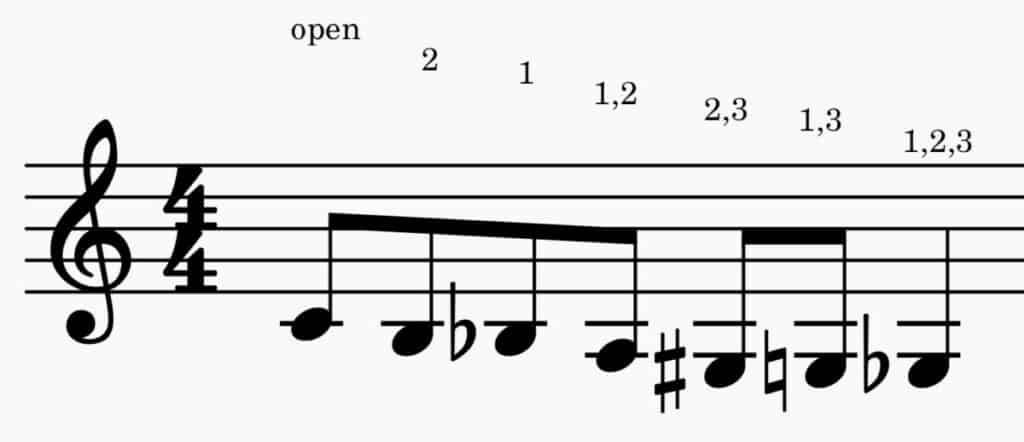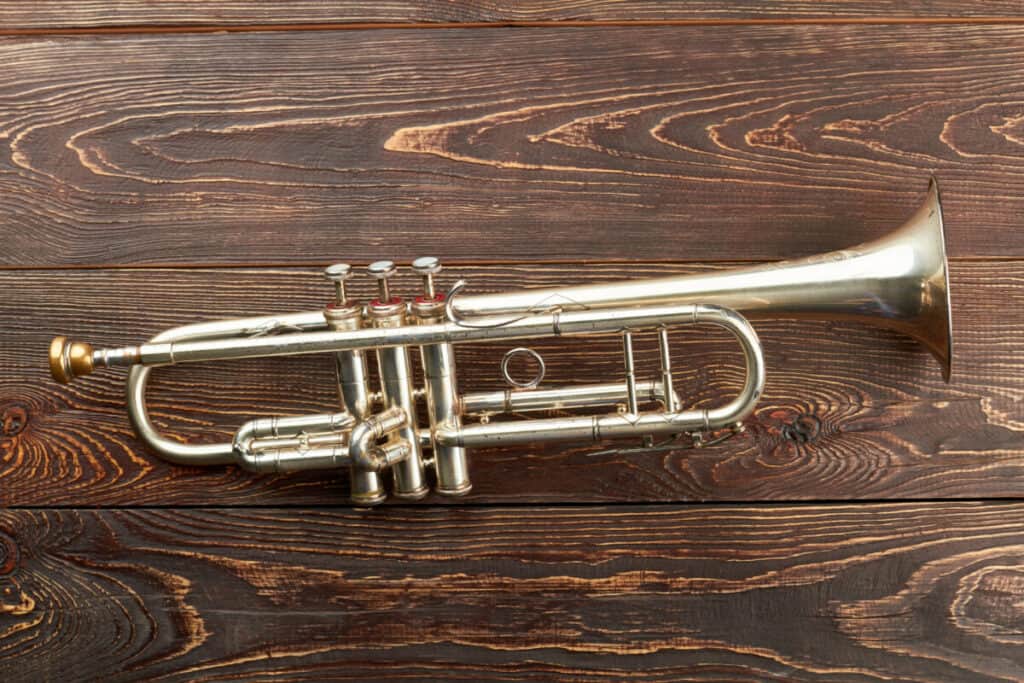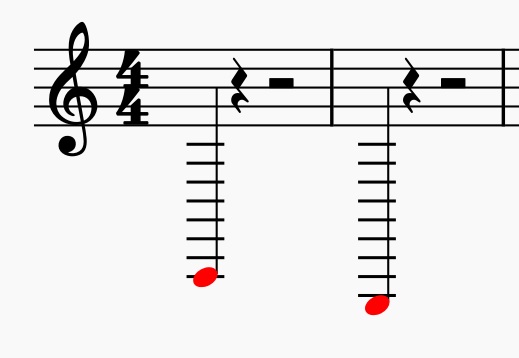This post contains affiliate links. We earn commissions if you purchase products from retailers after clicking on a link from our site. As an Amazon Associate, we earn from qualifying purchases.
The trumpet is not chosen for pieces because of its low register but because of its exceptionally strong mid and high register. You can never listen to a song and not be able to find the trumpets. So if you’re a trumpet player or someone writing music, you might be wondering, how long can a trumpet reasonably play?
The lowest part of the standard range of the trumpet is G3 flat (concert E3), however, utilizing pedal tones the trumpet can go all the way down to G1.
That doesn’t mean you should throw in a G1 into your musical piece–that’s just rude for any trumpet players involved. As a note, this post is about Bb trumpets.

By the way, looking for recording equipment and musical instruments? Check out Sweetwater.com for microphones, monitors, audio interface or any other recording gear that you could ever need. (Affiliate Link)
Lowest Note For Trumpet With Standard Fingerings
If you’re learning the trumpet or reading a standard manual for trumpet playing, the note that you’ll see at the bottom of the trumpet register is G3b/F3# (Concert E3).
But the trumpet can play much lower.
What the standard limit means is that the trumpet is designed to play notes down to this register.
What do I mean by that?

Slotting
If you pick up a piece of PVC at the hardware store and try to buzz into it… which is only something you’d ever see a brass player do because they are all kind of crazy, you’ll notice that you can only play a few notes and the notes have pretty big gaps in between them.
This is how a bugle works. A bugle is a fixed length and is only meant to resonate at a few frequencies. If you have a trumpet with no keys pressed down, you get a bugle.
The trumpet is essentially a long tube that can be changed in length by pressing combinations of the valve keys.
Once your lips match a supported frequency, then the trumpet resonates. You can really feel this if you press down valves 1,2 and then try and bend the notes up to the highest note. You’ll notice that the trumpet sound gets weaker the more you bend the note away from the slotted note, and you’ll find the pitch will jump up to the next note.
The valves of the trumpet help the player slot into different frequencies and it’s at these frequencies the trumpet sounds best.
So what about notes outside this range? Does this mean G3b is the absolute limit for how low the trumpet can go? Well, no! Let’s learn about pedal tones.
Trumpet and Pedal Tones
Pedal tones aren’t slotted notes, meaning you can play pedal tones with a variety of valve combinations. The pedal tones start at F3 for a trumpet and can go all the way down to G1, but this is a very extreme range for a player with fantastic pedal tone capability. Getting down to C2 is an achievement at this extreme part of the register.
Lowest Pedal Note You Can Play With Trumpet

This is a great video about pedal tones and also a demonstration of the G1 pedal tone with exceptional clarity.
Fingerings For Pedal Tones
It turns out there isn’t a standard set of fingerings for pedal tones–this is because the trumpet isn’t designed to slot at these tones.
On top of that, different trumpets will play pedal tones easier with different fingerings from one trumpet to the next.
This means that some trumpets you can play pedal C (C3) with all valves open, while some trumpets you’ll need to have all valves closed or perhaps 1,3 closed, etc.
You have to experiment with your trumpet to see which fingerings make it easier to play a particular pedal tone. You might find success with holding all the valves down just to get used to playing down there.
What About C Trumpets?
As you may know, some styles of music call for C trumpets (sure makes writing music easier). It turns out that the C trumpets have a slightly different shape to accommodate the two semitone difference between Bb trumpets and C trumpets.
This means that the bottom of a C trumpet range is two notes higher than their Bb cousins, so their bottom range is simply Concert G3b/F3#, while a Bb trumpet range goes down to Concert E.
Not a huge difference–but something to keep in mind. Just consider the range to be the same for C trumpets and Bb trumpets and that should do enough for you in 99% of situations.
